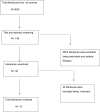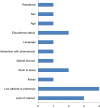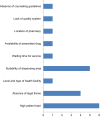Patient-Pharmacist Interaction in Ethiopia: Systematic Review of Barriers to Communication
- PMID: 32801660
- PMCID: PMC7395823
- DOI: 10.2147/PPA.S258914
Patient-Pharmacist Interaction in Ethiopia: Systematic Review of Barriers to Communication
Abstract
Despite the fact that pharmaceutical care has been expanding simultaneously with the increasing role of pharmacists and the number of prescriptions dispensed, the extended role of community pharmacists is largely confined to the dispensing of medications. This advancement in pharmacy services demands competent pharmacists and patient-centered communication. The objective of this review was to explore the barriers to patient-pharmacy interaction. Relevant kinds of literature were searched from Google Scholar, PubMed, Hinari, We of Science, Scopus, and Science Direct. A total of 3025 kinds of literature were searched. After excluding redundant and irrelevant literature, 13 kinds of literature were reviewed. Lack of adequate knowledge of drugs, lack of updated drug information, work experience, poor job satisfaction, lack of good communication skills, shortage of time, and clearness of pharmacist's voice and tone were barriers to communication from the side of pharmacy professionals. Factors like not wanting to talk much, bad attitude toward the pharmacy, being in a rush to leave, lack of willingness, language and educational status of the patient were patients' communication obstacles while high patient load, the suitability of dispensing area, and waiting time for service were associated challenges for patient-centered communication faced by health facilities. Barriers to patient-pharmacist interactions were related to patients, pharmacy professionals, and health institutions. These factors are not independent and the presence of one factor may trigger others and further compromise the patient-pharmacist interaction and result in poor medication outcomes.
Keywords: communication and Ethiopia; patient; pharmacist.
© 2020 Yimer et al.
Conflict of interest statement
The authors declare that they have no competing interests.
Figures
References
Publication types
LinkOut - more resources
Full Text Sources
Research Materials





